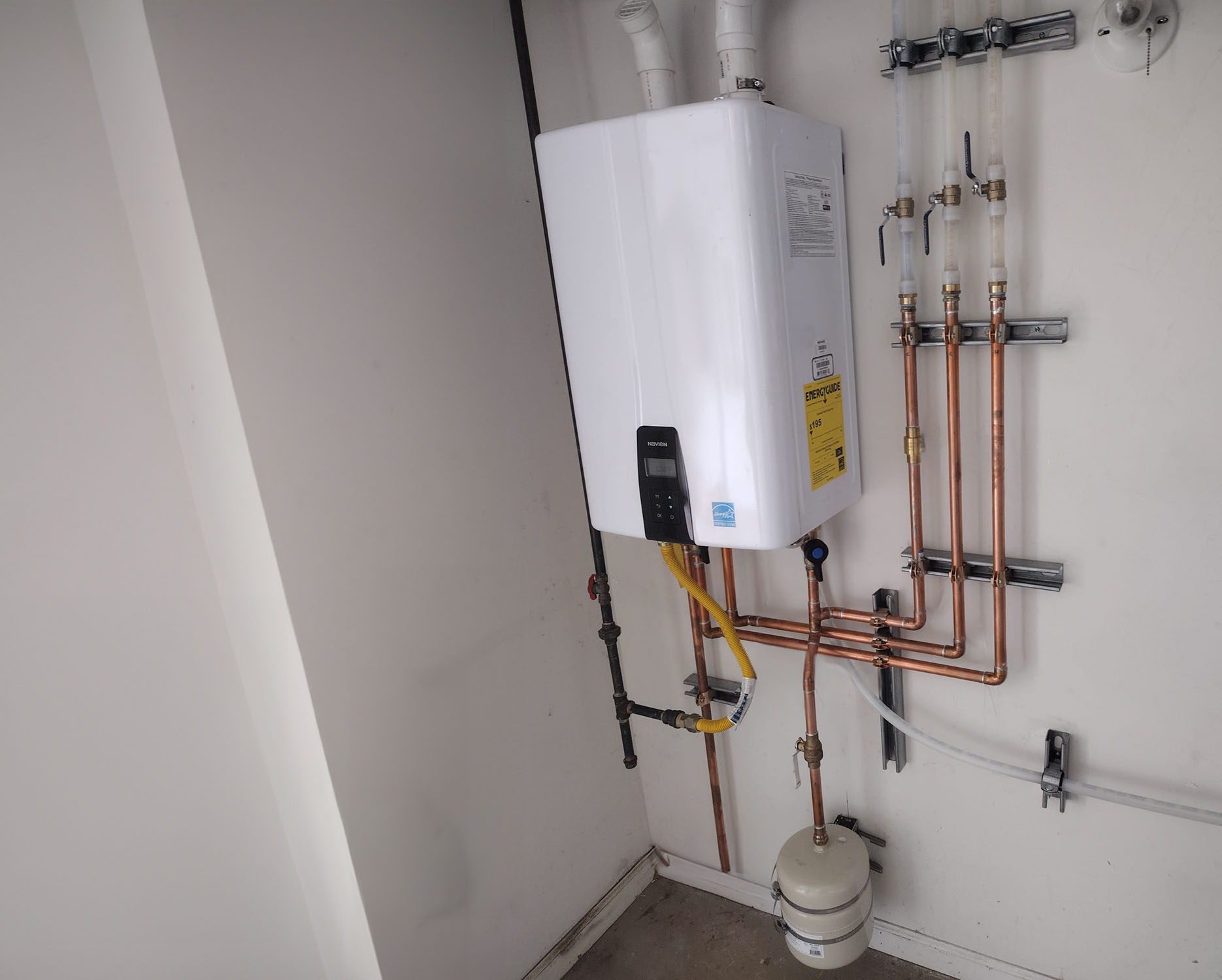

Energy-efficient Hot Water
Your trusted partner for professional home services. Quality workmanship, guaranteed satisfaction.




- HEP
- Energy-efficient Hot Water
Energy-efficient Hot Water | Tankless Water Heater Install | Plumbing | Petros
Picture stepping into your Petros home and enjoying a limitless stream of hot water—no bulky tank, no wasted energy, just pure comfort on demand. HEP’s energy-efficient hot water plumbing solutions replace outdated, space-hogging heaters with sleek, ultra-reliable technology that heats only what you use. That means lower utility bills, longer appliance life, and the peace of mind that comes from working with East Tennessee’s most trusted, factory-trained plumbing pros.
Our certified technicians handle every step of your tankless water heater install with precision, from sizing and venting to final performance checks, so you can start enjoying endless showers and faster dishwashing right away. We even haul off the old unit and back our workmanship with industry-leading warranties and 24/7 support. Ready to upgrade? Call HEP today and feel the hot-water difference tomorrow.
FAQs
What is a tankless water heater and how does it save energy compared with a traditional storage tank?
A tankless (or “on-demand”) water heater uses high-efficiency gas burners or electric elements to heat water only when a fixture calls for it. Because there is no large storage tank continually reheating 40–80 gallons, stand-by losses are eliminated. U.S. DOE studies show tankless models are 24–34 % more energy-efficient for households that use up to 41 gal/day of hot water, and 8–14 % more efficient for heavier use. That translates into lower utility bills and a reduced carbon footprint for Petros homeowners.
Will a tankless unit provide enough hot water for my family in Petros’s climate?
Yes—when sized correctly. Our technicians calculate the required flow rate (gallons per minute, GPM) based on the number of simultaneous fixtures and the incoming water temperature in Petros (typically 55–60 °F in winter). A family of four usually needs 6–8 GPM for two showers and a kitchen tap running together. We stock a range of units from 7 GPM to 11 GPM, and we can also install parallel units for larger households or small businesses. Because hot water is produced continuously, you’ll never “run out,” but the flow must be matched to demand.
How long does a tankless installation take and will my water be shut off?
A straightforward replacement of a gas tank with a gas tankless unit takes about 4–6 hours. Converting from electric to gas or relocating the heater can extend the project to one workday. Your water will be shut off only during the final tie-in—usually 60–90 minutes. We schedule installations around your routine, arrive with all permits in hand, and haul away the old tank at no extra charge.
What maintenance does a tankless water heater require, and can I do it myself?
Unlike tanks that can rust and leak, tankless units need mainly internal descaling to remove mineral buildup. In Petros’s moderately hard water (6–8 grains per gallon), we recommend a vinegar or citric-acid flush once a year, plus cleaning the air intake filter every six months. Many homeowners perform the flush with a small submersible pump and hoses, but we also offer a low-cost annual service that checks gas pressure, venting, and electronics to keep the warranty intact.
Are there rebates or incentives in Petros for installing an energy-efficient tankless system?
Yes. Through 12/31/2032, the federal Inflation Reduction Act offers a 30 % tax credit (up to $600) for ENERGY STAR-certified gas tankless heaters. Tennessee Valley Authority (TVA) customers can receive a $150–$250 bill credit for high-efficiency upgrades, and Morgan County’s EnergySmart program occasionally adds $100 instant rebates. We provide all paperwork and model numbers so you can claim every available incentive.
How much will I save on utility bills, and what is the typical payback period?
Savings depend on usage and current fuel rates, but most Petros households see gas or electric bills drop $80–$150 per year. Combined with rebates, the incremental cost of a tankless unit compared with a standard tank is usually recouped in 4–6 years. Because the heat exchanger is warrantied for up to 15 years—roughly twice a tank’s life—you’ll save again by avoiding at least one replacement cycle.